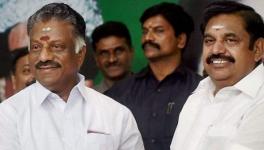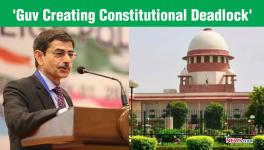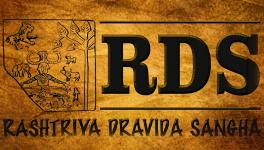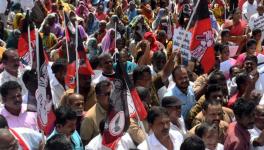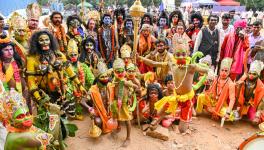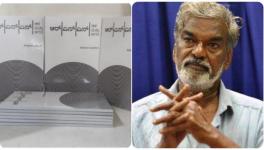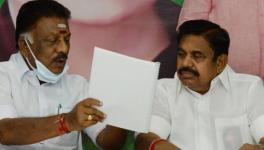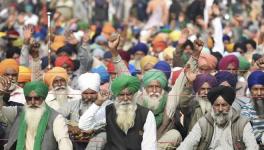Why Tamil Nadu-Style Coalitions of Non-Elite Social Groups are Vital to Politics
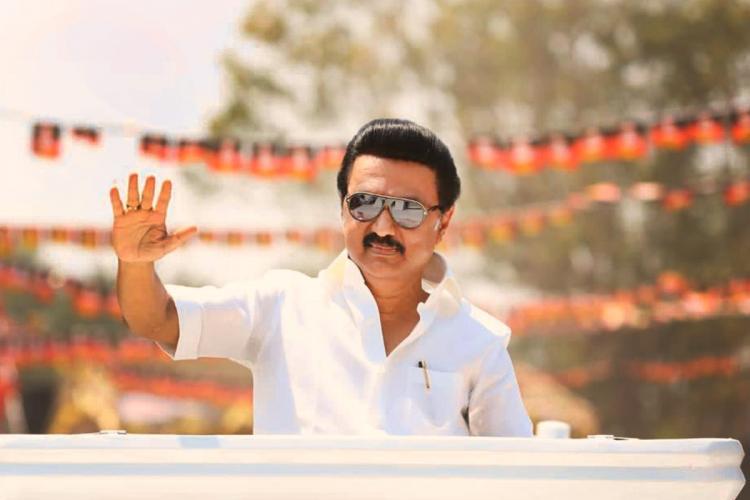
Image Courtesy: Wikimedia Commons
While speaking about his latest book, ‘Modi’s India: Hindu Nationalism and the Rise of Ethnic Democracy’, noted political scientist Christophe Jaffrelot observed that the century-old political mobilisation by the Hindu nationalists has made diversity, social, political or even spiritual, seem undesirable in India. As a result, we find today a codified Hindu identity that is exclusionary and inherently discriminatory. The politicised dissemination of this new Hindu identity was done through a mix of populism, nationalism and authoritarianism, and it has proved much to the disadvantage of the numerical majority that is socially, educationally, and consequently, economically backward.
This counter-revolution, as Jean Dreze would call it, mainly succeeded due to two sets of factors—external and internal. The external reasons include the inability to forge horizontal solidarity across the non-elite caste groups and the lack of a distinct socio-cultural repertoire, icons and idioms vis-à-vis the elite castes. Moreover, the hostile discourse around the rise of subalterns—the ‘silent revolution’ in Jaffrelot’s words—delegitimised a struggle for recognition, redistribution and representation of the subalterns in people’s minds.
The internal factors include uneven class and representational outcomes across the lower caste groups that earlier spearheaded subaltern movements. This alienated the non-dominant communities, which gravitated towards the Hindutva fold and subsequently fostered hostility towards the beneficiaries of the anti-caste movement. Consequently, a sandwich alliance is forged across all strata of the hierarchical caste spectrum, which pits the aspirational middle sections against the coalition of the “pure” upper and betrayed lower sections of society.
Tamil resilience and chinks within it
Electoral agility, political relevance, socio-cultural coherence, and the attendant opportunity to bring together a broad alliance are proffered as sustainable solutions to this counter-revolution. Indeed, the historical mobilisation in Tamil Nadu presents a case study worthy of emulating. The state stands at odds against Hindutva mobilisation, presenting itself as one of the last standing bastions against majoritarianism, alongside Kerala and Andhra Pradesh.
Tamil Nadu has the most socially diverse legislature and a near proportional representation of caste groups in the country. Altogether, the MLAs of the DMK belong to 37 different castes and communities, as against 18 for the AIADMK. The three major OBC groups (Vanniyar, Gounder and Thevar) make up 48 of its 133 legislators. The profile of Congress MLAs is also quite diverse, with 14 castes and communities represented in 18 MLAs. The case of the communist parties and the VCK is also similar. They field a diverse set of candidates and do not cater to a single caste group. Tamil Nadu also continues to foreground the repertoire of social justice, economic mobility of the subalterns and an inclusive socio-cultural offering through the Dravidian-Tamil identity.
However, there are two sources that are attempting to counter such mobilisation in Tamil Nadu. One is the perpetuation of the idea that there is animosity, even hatred, within the subalterns, i.e., the SCs and OBCs. This perception has hampered the legitimacy of the Dravidian mobilisation, and perpetuated in its stead a nativist and exclusionary Tamil nationalist socio-politics. While the former—nativism—is driven mainly by the elites in the state, the latter is driven by the people belonging to the lower castes, to the benefit of the elites at their own cost. In fact, the Tamil nationalist repertoire around purity and ascriptive superiority (read caste pride) provide the idiom to the Hindu nationalist offering in the state.
The renowned philosopher Nancy Fraser has identified a shift in the grammar of political claims-making, where struggles for recognition are becoming the paradigm in political conflict, while struggles for egalitarian redistribution are declining. What is important here is not the demand for recognition of a group’s specific identity, but their demand for recognition of their standing as full partners in social interactions, able to participate as peers with others in social life. That aspiration is fundamental to justice and cannot be satisfied by the politics of redistribution alone.
While the SC-OBC animosity in the state is real, its story is layered and has many points of interdependence. Notably, the Dalit assertion of the 1990s and the renewed energy directed towards mainstreaming Dalit grievances was buttressed by the Dravidian leaders, as Thol Thirumavalavan, chief of the Viduthalai Chiruthaigal Katchi (Liberation Panthers Party) said.
Further, the violence of the lower castes against the Dalits arises from a sense of insecurity—not dominance—and its roots lie in the upward economic mobility of the Dalits. The BJP’s strategy has been to exploit these insecurities and subsume them within a broader Hindutva politics or Hinduised identity. In short, in a politics of fear of the perceived ‘below’.
In many places across the country, the BJP has propagated inter-caste animosities in return for electoral gains. It deployed that strategy in Tamil Nadu as well. For example, it placated the Devendra Kulla Vellalars (previously notified as Scheduled Castes) while simultaneously backing the Vanniyar Sangam, which has dominated the headlines for its continued animosity against the SCs in the northern part of the state. This is why layered and mature coalitions of the non-elite social groups are vital—because the onslaught of right-wing extremism comes on the back of multiple coalitions of such groups. More often, the right forges such alliances purely to secure power.
Seeman’s Tamil nationalism: anathema to horizontal solidarities
A self-claimed follower of the late Prabhakaran, chief of the Liberation Tigers of Tamil Eelam, Seeman’s route to fame was through his public speeches at meetings organised by Dravidian collectives in the 2000s. After the 2009 war period, Seeman and his followers resorted to a series of activities to delegitimise Dravidian mobilisation. For example, former AIADMK minister and present BJP MLA Nainar Nagendran welcomed the decision to observe Periyar EV Ramasamy’s birthday as Social Justice Day in Tamil Nadu, but Seeman organised a vitriolic press conference against Periyar.
A sandwich alliance of caste groups that have benefited from Dravidian mobilisation, and which are now seeking to pursue pan-Indian aspirations, as well as caste groups that did not benefit enough from the mobilisation, are supporting Hindu nationalism and Tamil nationalism in Tamil Nadu. Yet the fact is, the BJP and the NTK continue to operate within the 15% residual vote share while the two major Dravidian alliances still secure 85% of votes. This informs us of the diverse offerings made by Dravidian alliances to the people of the state.
Cues from Tamil cinema
Tamil films reflect the complex characters and diversity of the state, and the compromises it takes to form a broad alliance. For example, director Pa Ranjith’s recently-released Sarpatta Parambarai depicts the social strata and the complexities attached to securing mobility within Tamil society. The movie is about contending with betrayal by one’s own people by seeking out and forging broader networks.
Rangan Vaathiyar, who plays the boxing coach of the protagonist is not a benevolent outsider and patriarch but an udanpirappu (brother) or comrade. Set in the 1970s, the director valiantly attempts to portray the North Madras region as a melting pot of subaltern communities through a variety of complex characters, and the coalitions they forged. Ranjith has departed from the hitherto broad-brushing of regions or communities by Shankar and AR Murugadoss, for instance, though they do not come from elite backgrounds either.
In the 1990s, Tamil Nadu cinema went through a nativistic phase in which caste identities and characters were openly celebrated and valorised. The movies of the era had timid female characters, and chastity and honour were the broad themes. A majority of characters were stripped of their agency. The trend reset in the mid-2000s when movies on anti-caste activism that foregrounded the grievances of subaltern and working classes were made. These films further mainstreamed the grievances of the subalterns, including the Dalits, while socio-political movements simultaneously pursued this agenda.
Today, the caste-class differences in Tamil Nadu have unsettled the lower end of the backward castes, a section of which is falling back to establishing the hierarchical status quo. The same anxiety has crept into the filmverse too. Director Mohan G’s recently released controversial film, Rudra Thandavam, is a valuable case study. The film claims to explore the Scheduled Caste status of those who have changed their religion and the politics around this. But in fact, it engenders hostility among close-knit communities and breaks the horizontal solidarities painstakingly forged in the state.
The director’s penchant for Hindutva politics seeks to drive audiences away from socio-economic realities and a quest for solutions. Therefore, instead of pursuing a political vocabulary rooted in redistribution, welfare, and empowerment, the viewers are persuaded to think along the lines of immediate identities and exaggerate their restive biases. Such discourses help socio-cultural elites maintain status quo. Worse, it recasts aspirational communities as the enemy or ‘other’ to be challenged.
To sum up, the near proportional representation of castes in the Tamil Nadu Assembly reflects the complex and heterogeneous social interactions in the state. Films from the state also often reflect its politics and aspirations. The lesson from this is that the politics of recognition is not only a tool to be manipulated for electoral gains. That would be deeply antithetical to the diversity of caste, class and religious interactions in the entire country.
Vignesh Karthik KR is a doctoral researcher at the King’s India Institute, King’s College London. Vishal Vasanthakumar is a graduate of the Harvard Graduate School of Education and an independent researcher working at the intersection of caste, politics and education. The views are personal.
Get the latest reports & analysis with people's perspective on Protests, movements & deep analytical videos, discussions of the current affairs in your Telegram app. Subscribe to NewsClick's Telegram channel & get Real-Time updates on stories, as they get published on our website.









